Topic hibachi steak and chicken with fried rice recipe: Discover the art of making Hibachi Steak and Chicken with Fried Rice, a beloved Japanese dish, right in your kitchen. This guide promises to turn your cooking experience into an unforgettable culinary adventure.
Table of Content
- How to make hibachi steak and chicken with fried rice?
- Essential Ingredients and Substitutions
- Step-by-Step Cooking Guide for Steak and Chicken
- Secrets to Perfect Hibachi Fried Rice
- Vegetable Stir Fry: The Perfect Side
- Homemade Sauces: Yum Yum and Ginger Sauce
- YOUTUBE: Ultimate Hibachi Steak and Chicken Recipe: Cooking Tips by a Pro Hibachi Chef
- Cooking Techniques and Equipment
- Tips for Meal Prep and Storage
- Common Mistakes to Avoid
How to make hibachi steak and chicken with fried rice?
To make hibachi steak and chicken with fried rice, follow these steps:
- Start by cooking the fried rice:
- Heat the flat top griddle or hibachi grill to medium-high heat for at least 5 minutes.
- Add 2 tablespoons of sesame oil (or olive oil) and spread it evenly on the grill surface.
- Throw in 1 diced medium onion and sauté until translucent.
- Push the onions to the side and crack 3 eggs into the center of the grill. Scramble the eggs and mix them with the onions.
- Add a 12 oz bag of frozen vegetables and cook until heated through.
- Add 6 cups of cooked and cooled Basmati rice to the grill, breaking up any clumps.
- Stir everything together and cook for a few more minutes until the rice is heated through.
- Remove the fried rice from the grill and set aside.
- Now, it\'s time to cook the hibachi steak and chicken:
- Season both sides of the steak and chicken with salt and pepper, or any other preferred seasoning.
- Heat the grill to high heat.
- Place the steak on the grill and cook for about 4-5 minutes per side for medium-rare or until desired doneness.
- Remove the steak from the grill and let it rest for a few minutes before slicing.
- Next, cook the chicken on the grill for about 5-6 minutes per side or until cooked through.
- Remove the chicken from the grill and let it rest for a few minutes before slicing.
- Serve the hibachi steak and chicken with the fried rice:
- Slice the steak and chicken into thin strips.
- Plate the fried rice and arrange the sliced steak and chicken on top.
- You can garnish with some chopped green onions or sesame seeds if desired.
- Serve hot and enjoy your homemade hibachi steak and chicken with fried rice!
READ MORE:
Essential Ingredients and Substitutions
To recreate the iconic flavors of Hibachi Steak and Chicken with Fried Rice at home, you"ll need a combination of fresh ingredients and pantry staples. Here"s a detailed list along with substitutions to accommodate any pantry:
- Steak (sirloin or ribeye) and chicken breast - for vegetarian options, consider tofu or seitan.
- Day-old rice - for a healthier twist, use brown rice or cauliflower rice.
- Soy sauce - tamari or coconut aminos as gluten-free options.
- Sesame oil and vegetable oil - for a nuttier flavor, use peanut oil.
- Eggs - omit for a vegan version or use scrambled tofu.
- White onion, zucchini, carrots, and green onions - feel free to add or substitute with your favorite vegetables.
- Garlic and ginger - fresh is best, but ground can be used in a pinch.
- Salt and pepper for seasoning.
- Optional: sesame seeds, lemon slices, and yum yum sauce for garnishing.
These ingredients are flexible; feel free to adjust based on dietary preferences or availability. The key is to balance the flavors to achieve that signature hibachi taste.
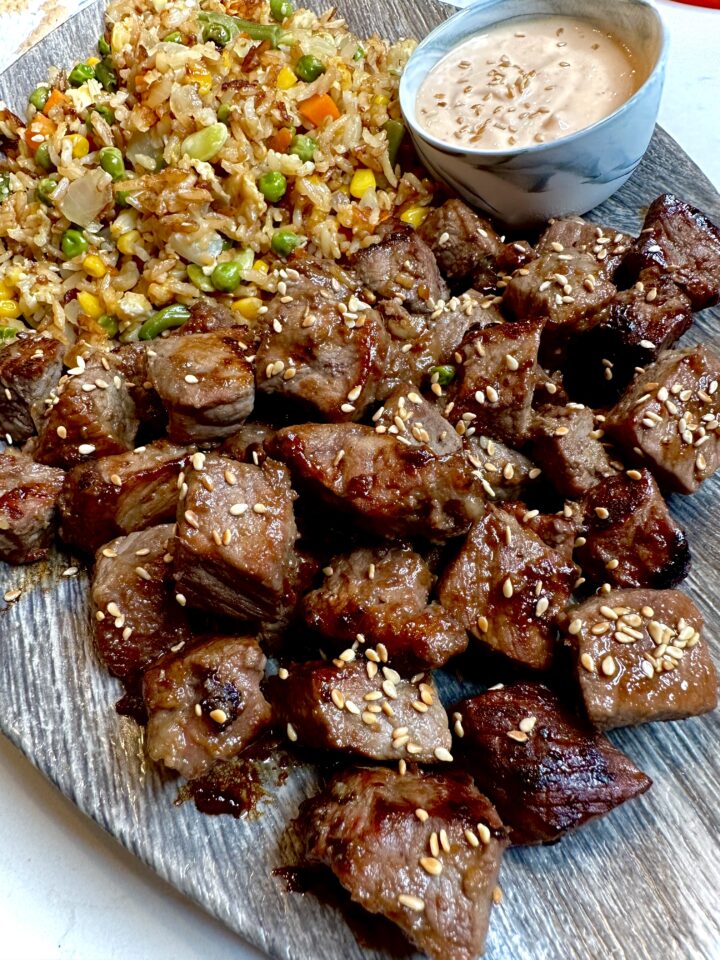
Step-by-Step Cooking Guide for Steak and Chicken
Preparing hibachi steak and chicken with fried rice is an enjoyable process that brings the flavors of Japanese cuisine into your home. Follow these detailed steps to ensure perfectly cooked meat every time:
- Prepare the Meat: Start by cutting the steak and chicken breast into bite-sized pieces. Season with salt and pepper.
- Heat the Pan: Preheat your skillet or hibachi grill over medium-high heat. Add a tablespoon of vegetable oil.
- Cook the Steak: Add the steak pieces to the skillet. Cook for about 2-3 minutes on each side or until they reach your preferred level of doneness. Remove and set aside.
- Cook the Chicken: In the same skillet, add the chicken pieces. Cook until they are thoroughly cooked through, about 4-5 minutes, then remove and set aside with the steak.
- Rest the Meat: Let the steak and chicken rest for a few minutes before combining them with the fried rice. This helps to retain their juices and flavor.
This cooking guide ensures your steak and chicken are perfectly prepared for your hibachi fried rice. The key to hibachi cooking is high heat and quick cooking, which seals in the flavors and juices of the meat.
Secrets to Perfect Hibachi Fried Rice
Mastering the perfect Hibachi Fried Rice at home is easier than you think. Follow these secrets and steps for a dish that rivals your favorite Hibachi restaurant:
- Use Day-Old Rice: Rice that"s been refrigerated overnight has less moisture, which is key for achieving that signature texture.
- High Heat Cooking: Hibachi chefs cook on high heat to sear the ingredients quickly, locking in flavors. A large pan or wok and high heat mimic this effect.
- Ingredients in Stages: Cook ingredients in stages, starting with those that take longest. Usually, onions and carrots first, then proteins, followed by rice, and finally, eggs and green onions.
- Seasoning: A combination of soy sauce, sesame oil, and a touch of sugar adds depth. Adjust to taste, but remember, the key is balance.
- Keep It Moving: Constant stirring and tossing ensure even cooking and prevent sticking, just like a Hibachi chef.
- Finishing Touches: A sprinkle of sesame seeds, a squeeze of lemon, or a dash of yum yum sauce can elevate your fried rice to the next level.
With these secrets, your Hibachi Fried Rice will not only taste great but also bring the excitement of Hibachi cooking right into your home kitchen.

Vegetable Stir Fry: The Perfect Side
The perfect complement to Hibachi Steak and Chicken with Fried Rice is a vibrant, crunchy vegetable stir fry. Here"s how to prepare this delicious side:
- Prepare your vegetables: Slice zucchini, carrots, onions, and bell peppers into thin, bite-sized pieces for even cooking.
- Heat a tablespoon of vegetable oil in a large skillet or wok over medium-high heat. For an authentic flavor, sesame oil is also a great option.
- Add the harder vegetables first, such as carrots and onions, and stir-fry for about 2 minutes. They take longer to cook.
- Follow with the softer vegetables like zucchini and bell peppers. Stir continuously to ensure even cooking and to prevent burning.
- Season with salt, pepper, and a splash of soy sauce or teriyaki sauce for that signature umami flavor.
- For an extra touch of freshness, add a sprinkle of green onions or sesame seeds just before serving.
- Stir fry until the vegetables are brightly colored but still crisp, about 3-4 minutes.
This vegetable stir fry not only adds a healthy side to your hibachi meal but also brings a delightful texture contrast to the savory steak, chicken, and fried rice. Customize the vegetable mix to suit your tastes or to match the season!
Homemade Sauces: Yum Yum and Ginger Sauce
Enhance your Hibachi Steak and Chicken with Fried Rice with these easy-to-make, flavorful sauces. Both Yum Yum and Ginger Sauce add a deliciously unique touch to your hibachi meal.
Yum Yum Sauce
- Combine 1 cup mayonnaise, 1 tablespoon tomato paste, 1 tablespoon melted butter, 1/2 teaspoon garlic powder, 1 teaspoon sugar, 2 tablespoons water, and a dash of paprika in a bowl.
- Whisk until smooth. For a thinner consistency, add more water, one teaspoon at a time.
- Taste and adjust seasoning if necessary. Chill for at least an hour before serving to enhance the flavors.
Ginger Sauce
- In a blender, combine 1/2 cup chopped onion, 1/2 cup soy sauce, 1/4 cup rice vinegar, 1 tablespoon grated fresh ginger, 1 teaspoon sugar, and 1/4 cup vegetable oil.
- Blend until smooth. For a spicier kick, add a small piece of fresh jalapeño or a dash of hot sauce.
- Refrigerate to let the flavors meld together, ideally for an hour or more before serving.
These sauces can be stored in the refrigerator for up to a week, making them perfect for meal prep or for adding a quick, tasty touch to any dish.
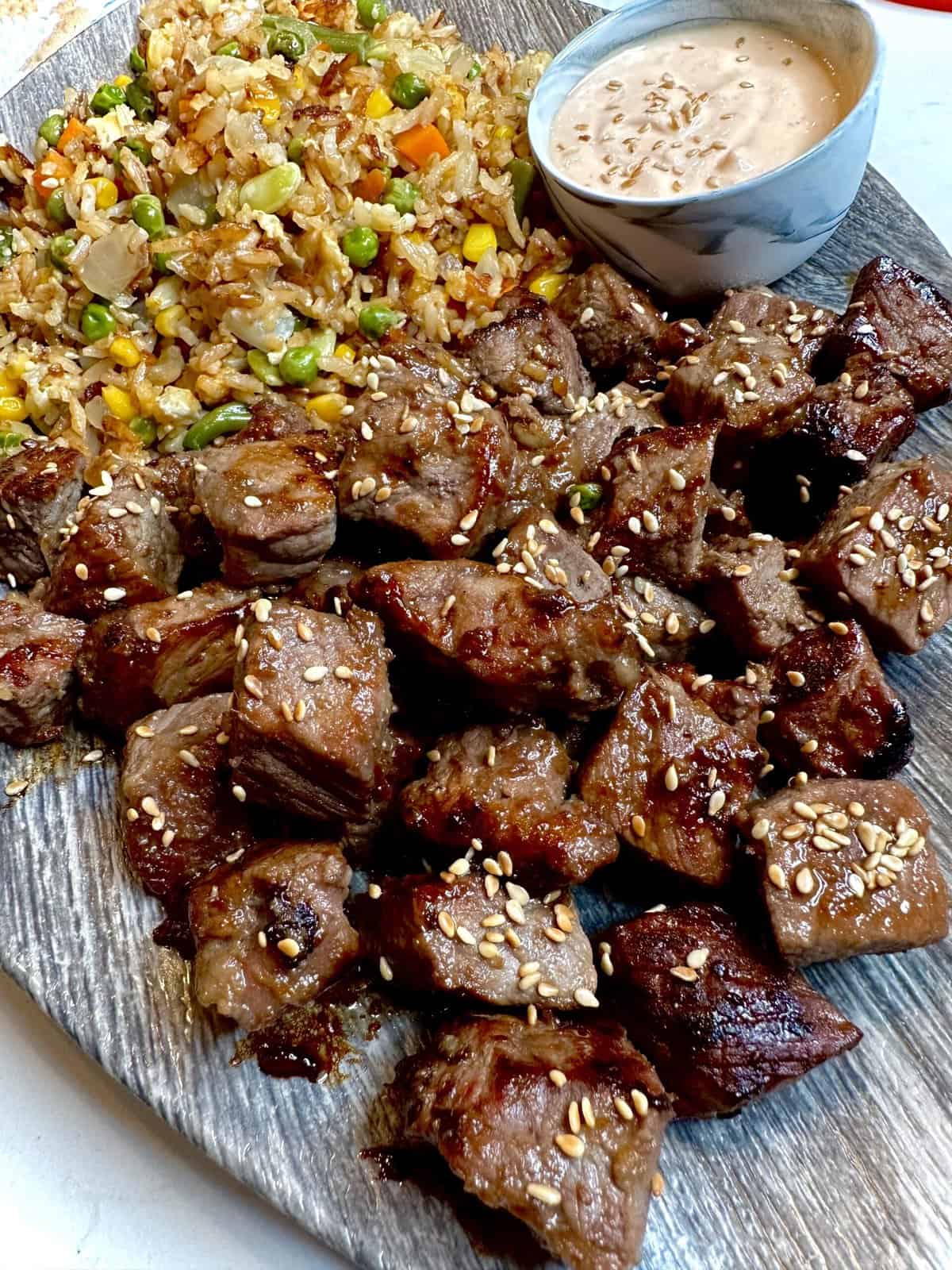
Ultimate Hibachi Steak and Chicken Recipe: Cooking Tips by a Pro Hibachi Chef
Looking for some helpful tips to take your cooking skills to the next level? This video is the perfect resource for you! Learn insider cooking tips and tricks that will elevate your dishes and impress your friends and family. Don\'t miss out on becoming a master chef in your own kitchen!
Hibachi Steak, Chicken, and Fried Rice on the Blackstone Griddle
Excited to discover the secret to perfectly cooked meals every time? Look no further than this video about the incredible Blackstone Griddle! Get ready to be amazed by its versatility and how it can transform your backyard cooking experience. From sizzling burgers to mouthwatering breakfasts, this is a must-watch for all grilling enthusiasts.
Cooking Techniques and Equipment
Mastering hibachi cooking at home requires understanding the right techniques and having the appropriate equipment. Here’s how to achieve that authentic hibachi experience:
- High Heat Cooking: Hibachi is known for its high-heat cooking method, which sears the meat and vegetables quickly, locking in flavors. Use a large skillet or wok and get it very hot before adding your ingredients.
- The Right Oil: Use oils with a high smoke point, such as vegetable or canola oil, to withstand the high temperatures without burning.
- Prep Everything: Have all your ingredients chopped and ready to go. Hibachi cooking is fast, so you won’t have time to chop as you cook.
- Equipment: Ideally, cook on a flat top grill or large griddle to mimic the hibachi style. If you don’t have one, a large skillet or wok will suffice.
- Flipping and Tossing: Practice your flipping and tossing skills to cook and mix ingredients evenly. A large spatula or a pair of long tongs can help manage this on a skillet or wok.
- Layering Flavors: Add seasonings and sauces at different stages of cooking to build depth. Begin with salt and pepper, and finish with soy sauce or your homemade sauces for a final flavor boost.
By following these techniques and using the right equipment, you’ll be able to recreate the unique taste and experience of hibachi cooking in your own kitchen.
Tips for Meal Prep and Storage
Mastering hibachi cooking at home requires understanding the right techniques and having the appropriate equipment. Here’s how to achieve that authentic hibachi experience:
- High Heat Cooking: Hibachi is known for its high-heat cooking method, which sears the meat and vegetables quickly, locking in flavors. Use a large skillet or wok and get it very hot before adding your ingredients.
- The Right Oil: Use oils with a high smoke point, such as vegetable or canola oil, to withstand the high temperatures without burning.
- Prep Everything: Have all your ingredients chopped and ready to go. Hibachi cooking is fast, so you won’t have time to chop as you cook.
- Equipment: Ideally, cook on a flat top grill or large griddle to mimic the hibachi style. If you don’t have one, a large skillet or wok will suffice.
- Flipping and Tossing: Practice your flipping and tossing skills to cook and mix ingredients evenly. A large spatula or a pair of long tongs can help manage this on a skillet or wok.
- Layering Flavors: Add seasonings and sauces at different stages of cooking to build depth. Begin with salt and pepper, and finish with soy sauce or your homemade sauces for a final flavor boost.
By following these techniques and using the right equipment, you’ll be able to recreate the unique taste and experience of hibachi cooking in your own kitchen.

READ MORE:
Common Mistakes to Avoid
Creating a perfect Hibachi steak, chicken, and fried rice meal is an art that requires attention to detail and technique. To ensure your Hibachi experience is as authentic and delicious as possible, here are some common mistakes to avoid:
- Not Preheating the Pan: A hot pan is crucial for searing the steak and chicken properly, ensuring they"re juicy on the inside and beautifully browned on the outside. Always preheat your pan or griddle for a few minutes before adding the meat.
- Using Fresh Rice for Fried Rice: Freshly cooked rice can become mushy when stir-fried. For the best texture, use rice that has been cooked and then chilled in the refrigerator for at least a few hours, or overnight.
- Overcrowding the Pan: Cooking too much food in the pan at once can lower the temperature, causing the meat to steam rather than sear. Cook in batches if necessary to maintain high heat for the best texture and flavor.
- Skipping the Marination: Marinating the steak and chicken not only adds flavor but also tenderizes the meat. Even a brief marination time can make a significant difference in taste and tenderness.
- Not Cooking Vegetables Separately: Vegetables have different cooking times than meat. Cook them separately to ensure each component of your dish is perfectly cooked.
- Forgetting to Season: Seasoning at every stage of cooking builds layers of flavor. Remember to season your meat before cooking, and don’t forget to season your fried rice and vegetables as well.
- Ignoring the Importance of High-Quality Ingredients: The quality of your ingredients directly affects the taste of your dish. Use fresh vegetables, high-quality meats, and authentic sauces for the best results.
- Avoiding Fat: Hibachi cooking typically involves a good amount of butter, oil, or both, which contributes to the rich flavor and texture of the dish. Don’t skimp on these, especially when making fried rice.
- Overcooking the Meat: Hibachi steak and chicken should be tender and juicy. Pay close attention to cooking times to avoid overcooking, which can lead to dry, tough meat.
- Lack of Preparation: Hibachi cooking moves quickly, so having all your ingredients prepped and ready to go before you start cooking is essential. This includes marinating the meat, chopping vegetables, and cooking the rice ahead of time.
By avoiding these common pitfalls, you"ll be well on your way to creating a delicious Hibachi meal that rivals your favorite restaurant"s.
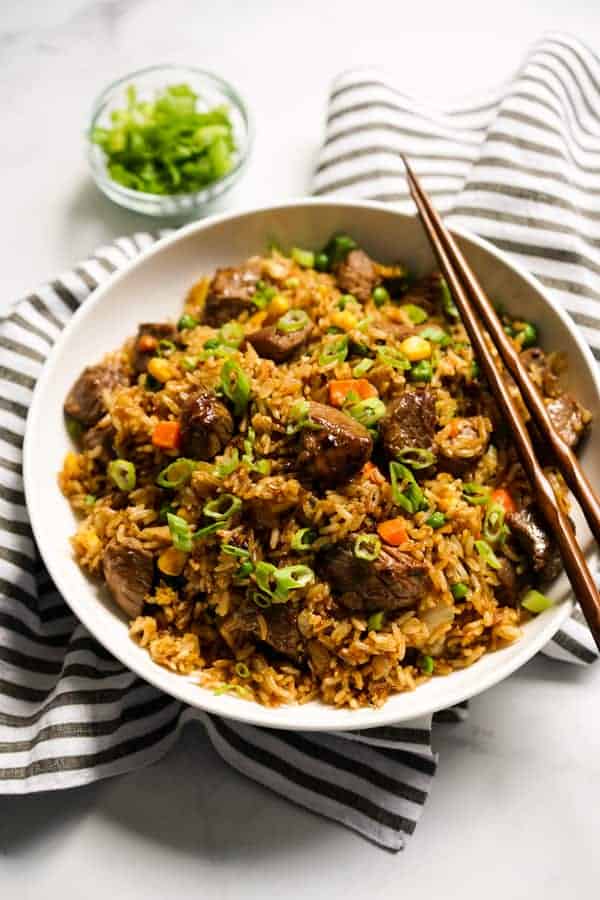
:max_bytes(150000):strip_icc()/7437838-c22f0c6a961f424085cff23156c2d030.jpg)
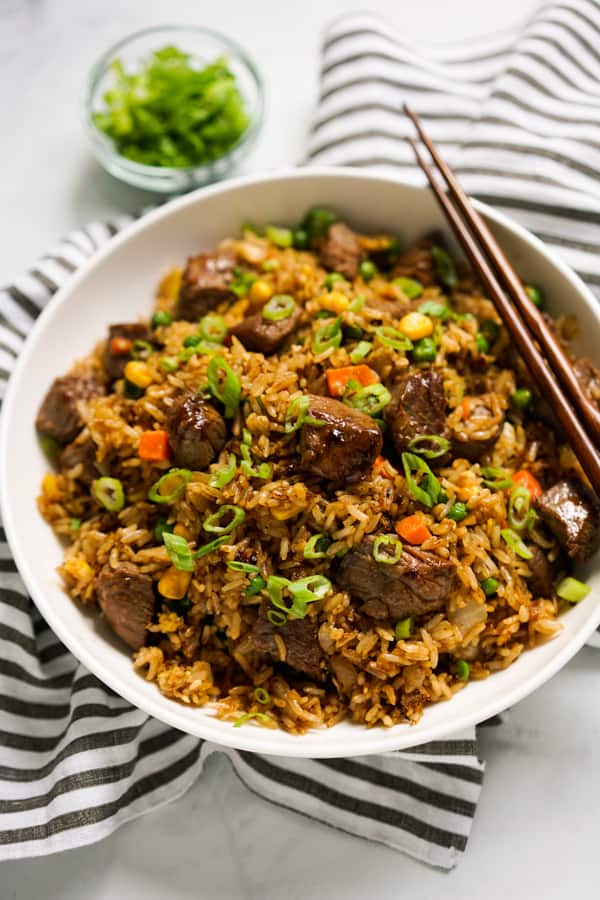
:max_bytes(150000):strip_icc()/9131424-pepper-steak-and-rice-Louis-Da-Don-White-4x3-1-e1aa0823d23c4c0695ea9dd13be441fc.jpg)
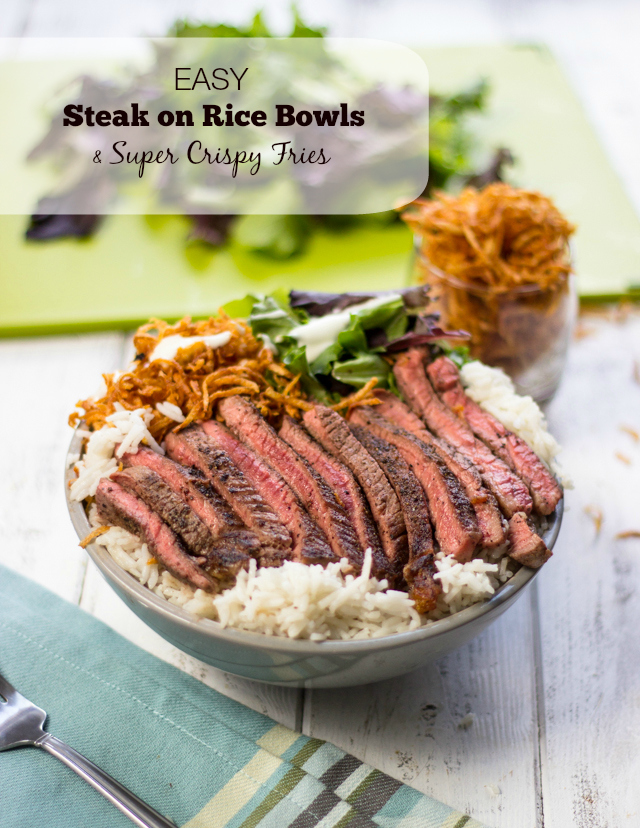
:max_bytes(150000):strip_icc()/237608-Hibachi-Style-Fried-Rice-ddmfs-4x3-321-1-5632564a5b874494bfbc0a1dfa737eb5.jpg)



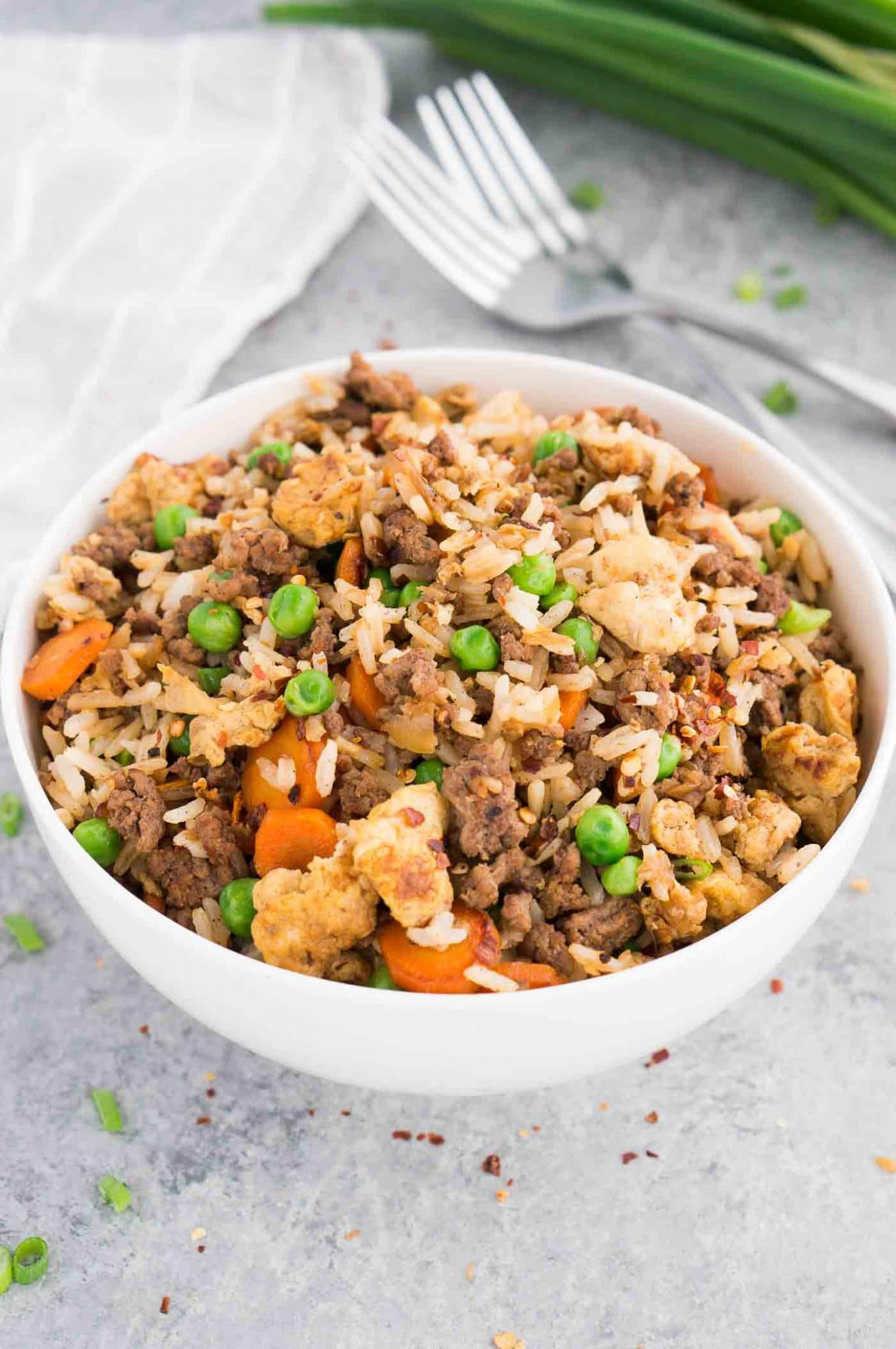
:max_bytes(150000):strip_icc()/easy-vegetable-fried-rice-recipe-hero-2-fed2a62b8bce4c51b945d9c24c2edb68.jpg)